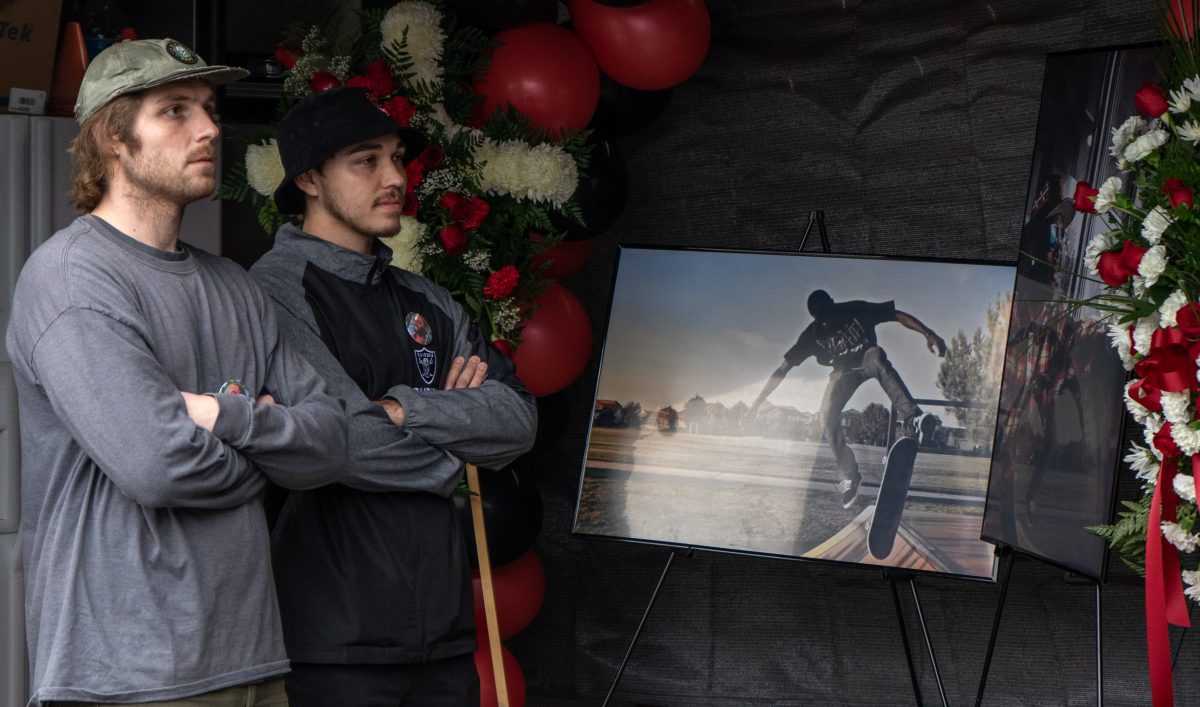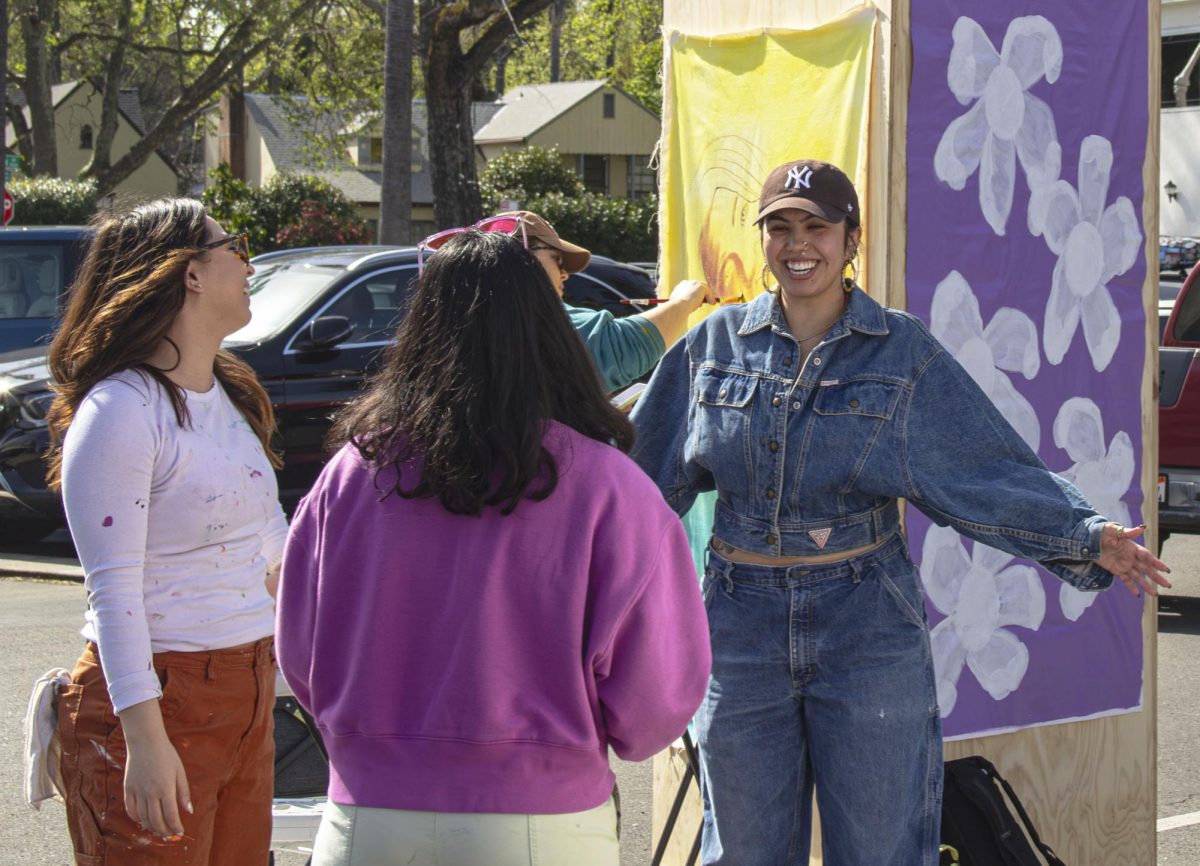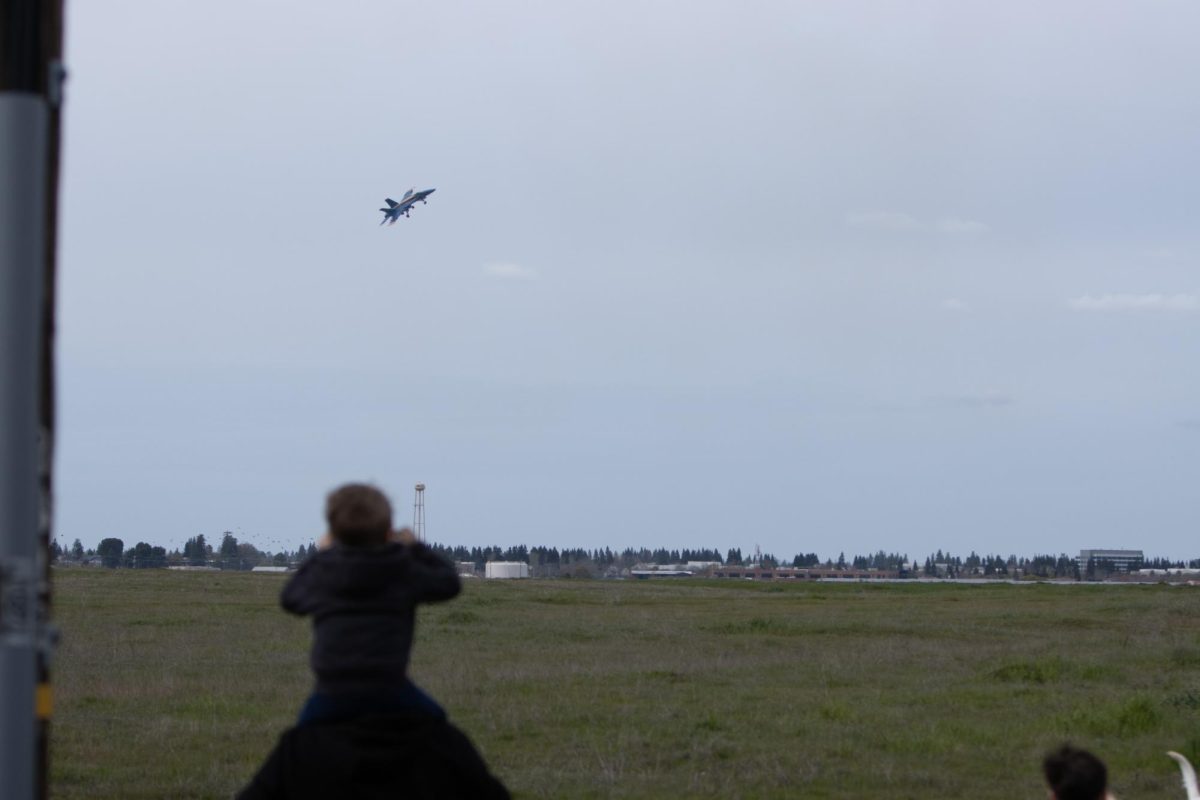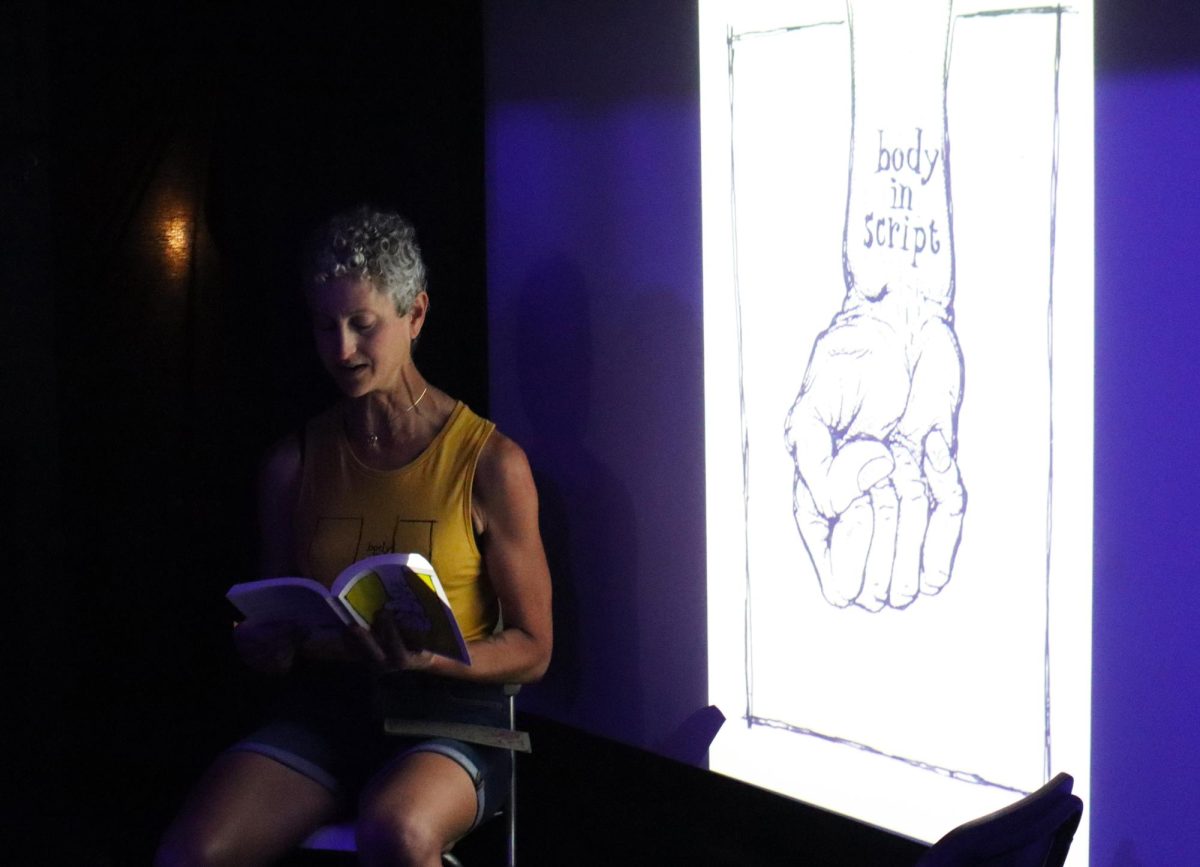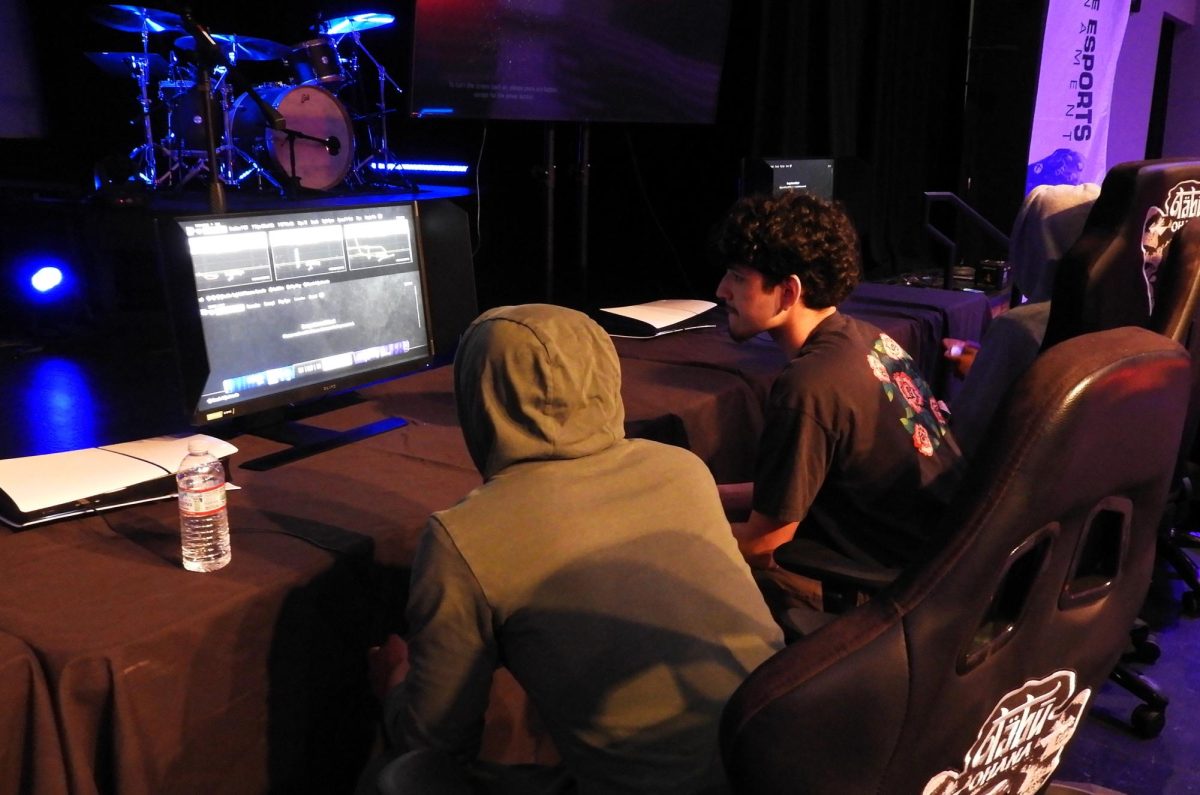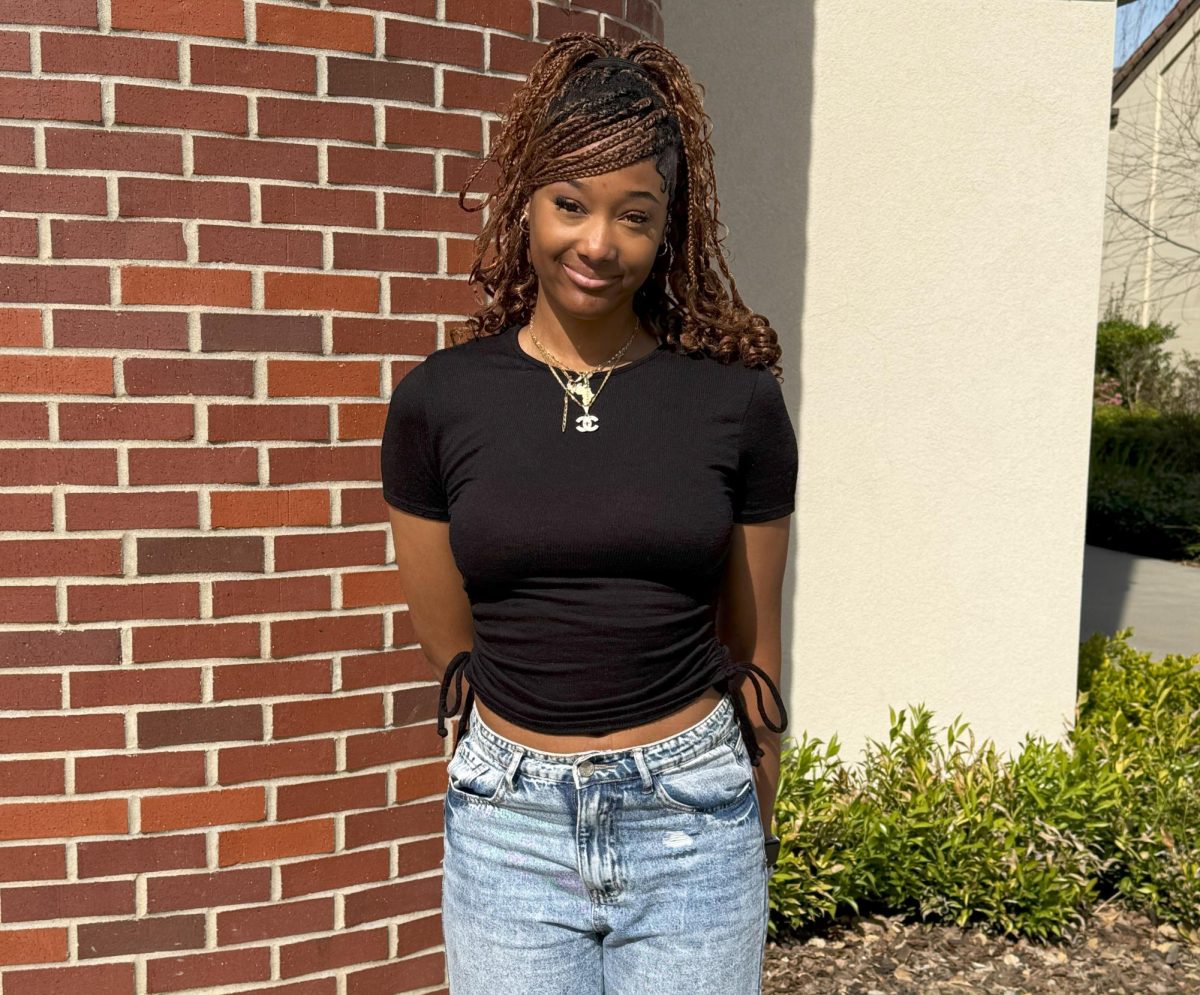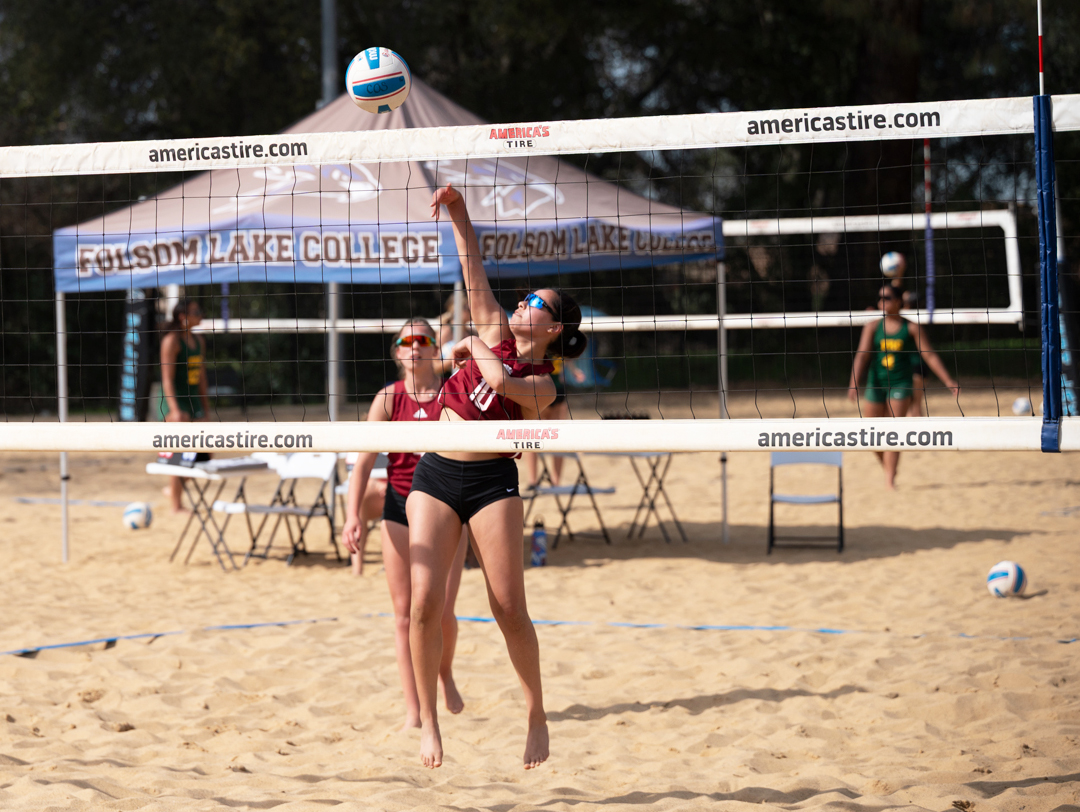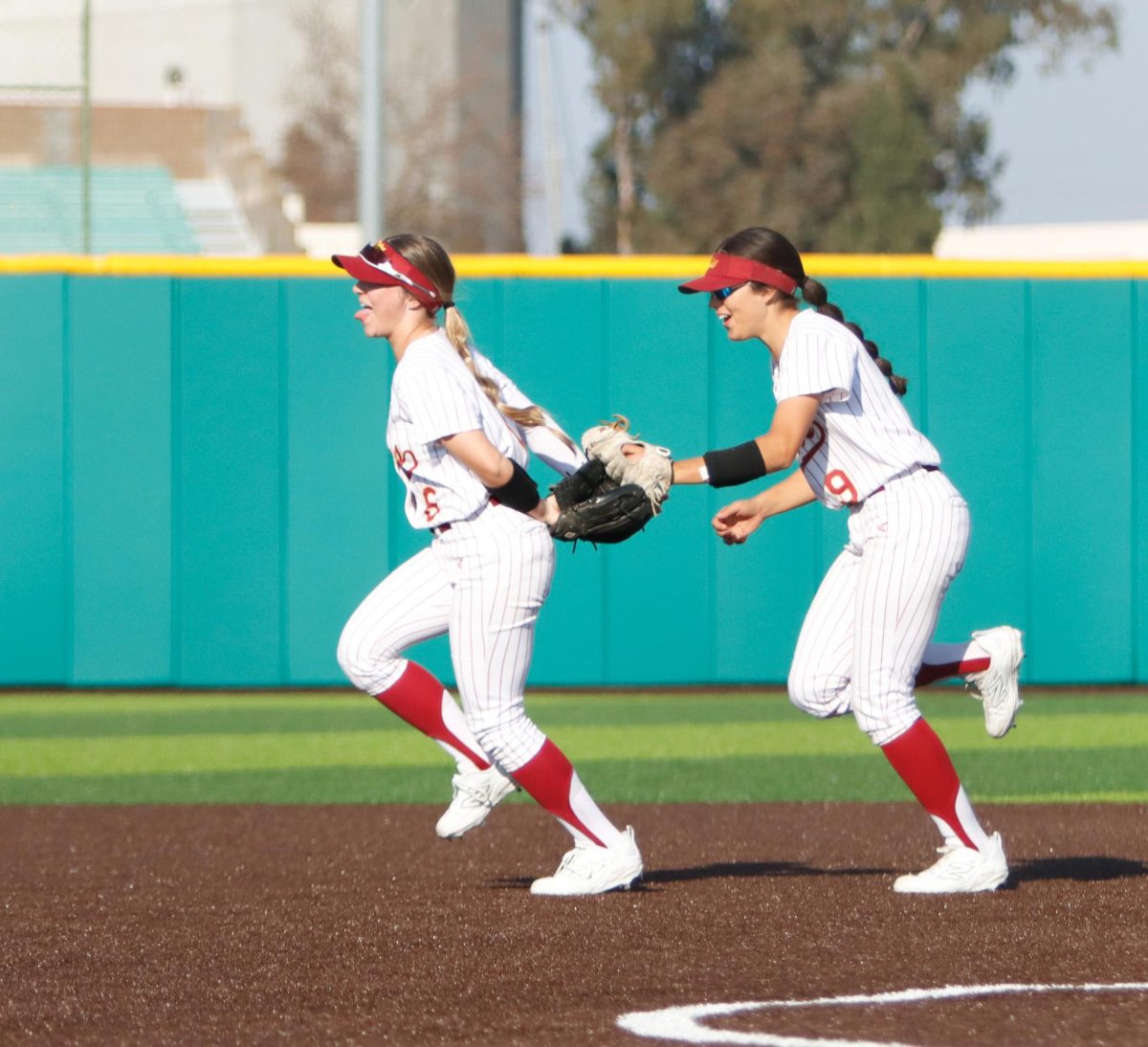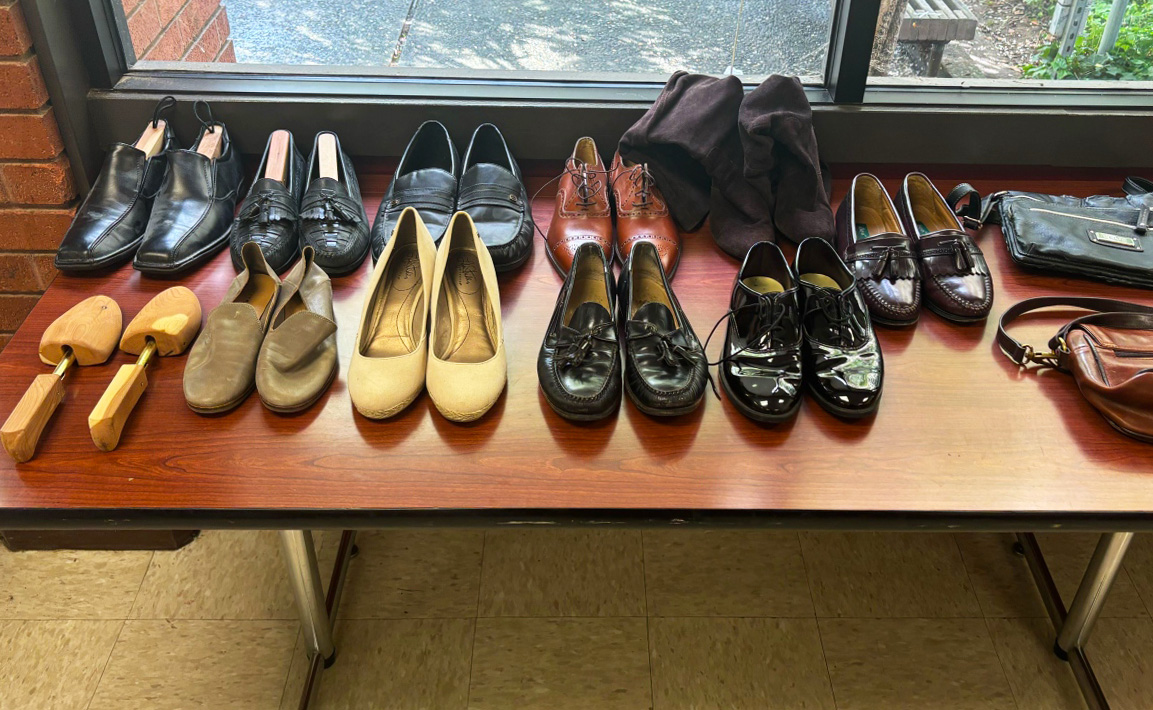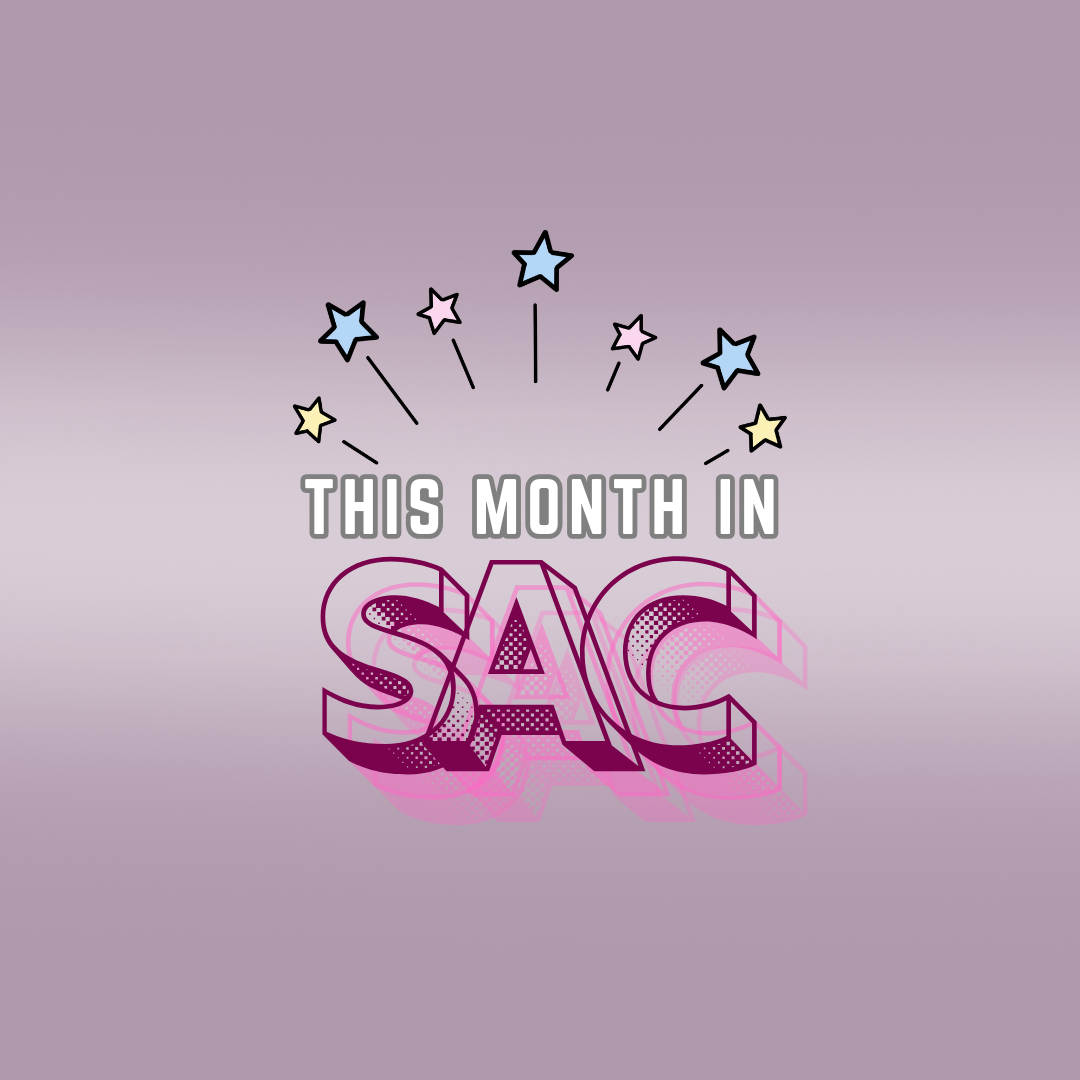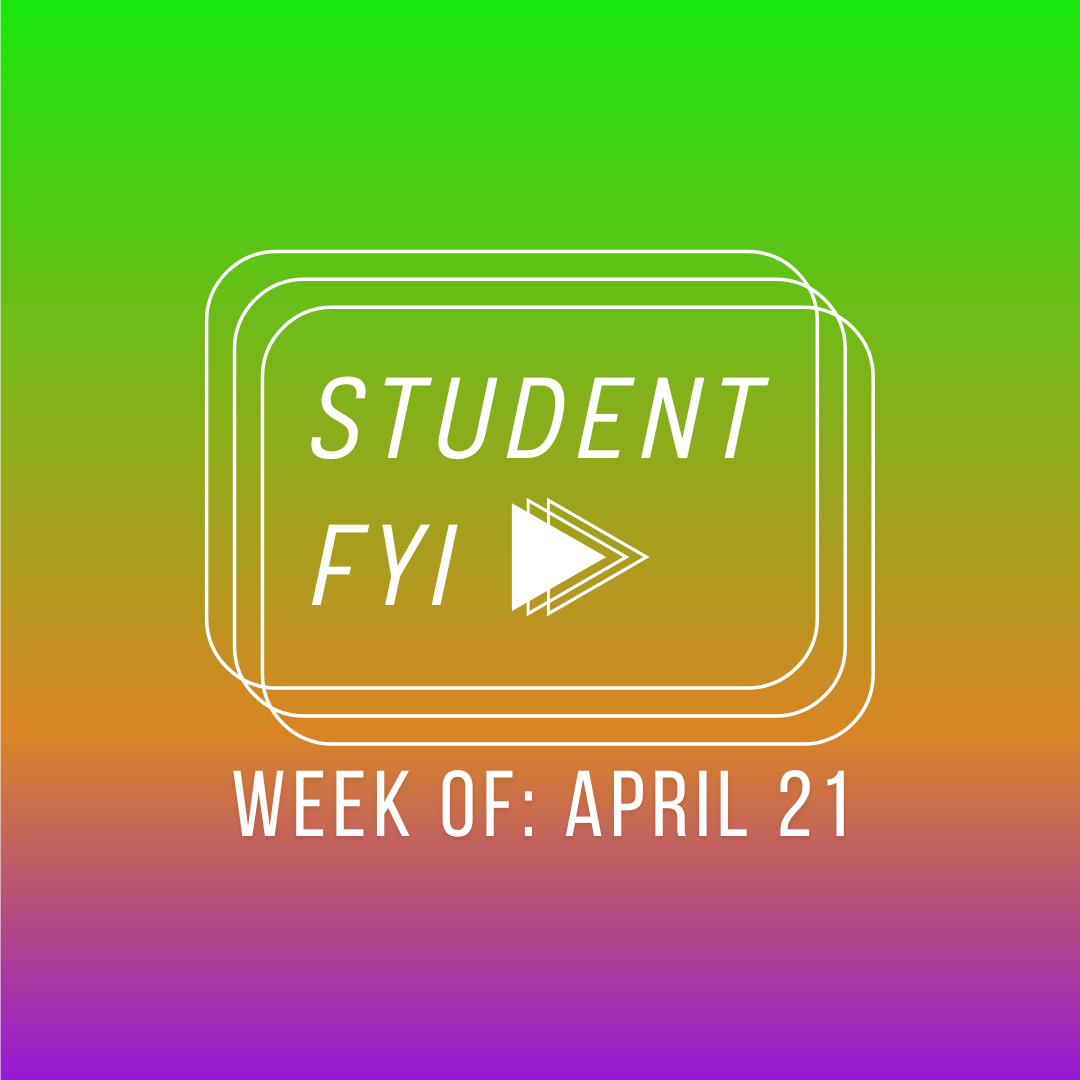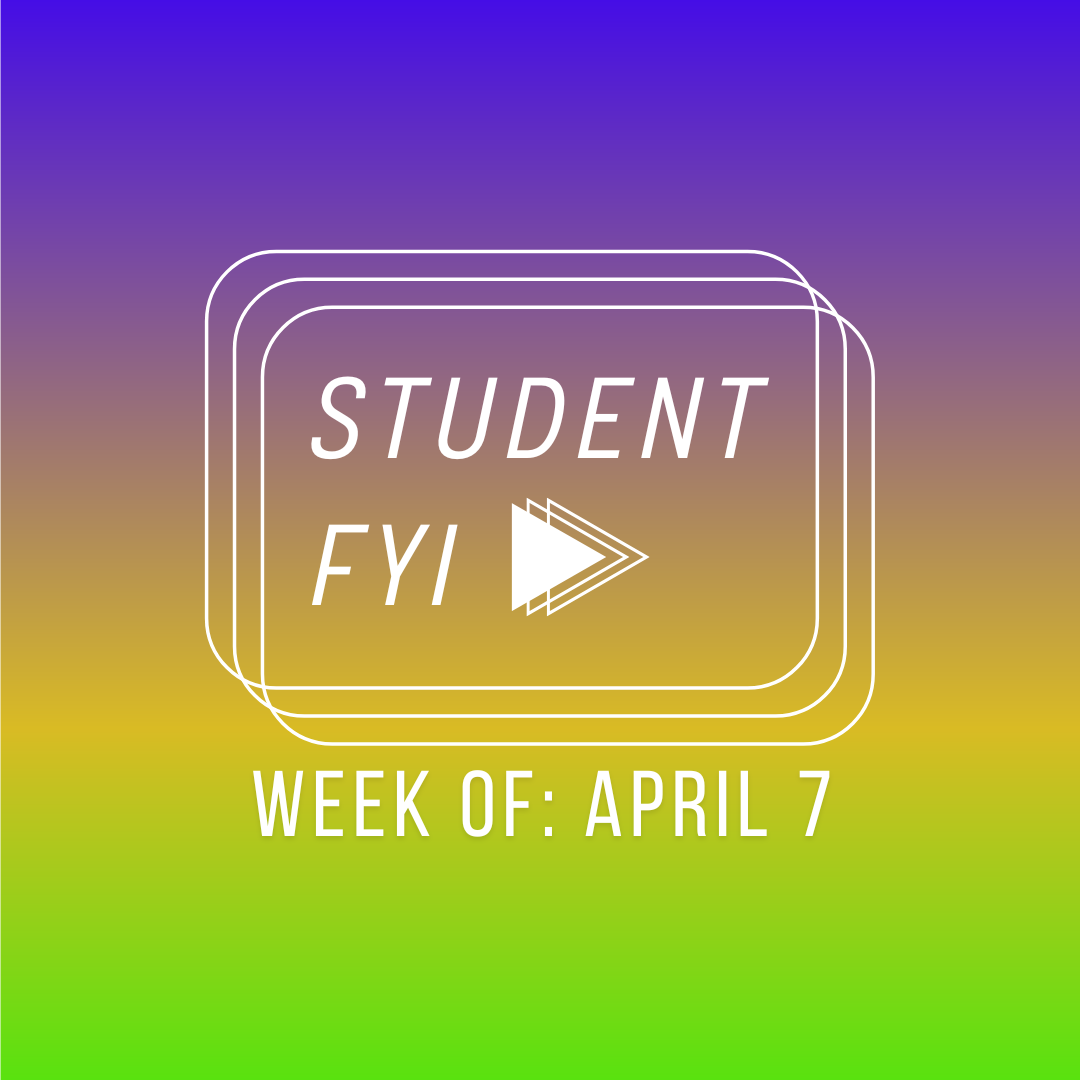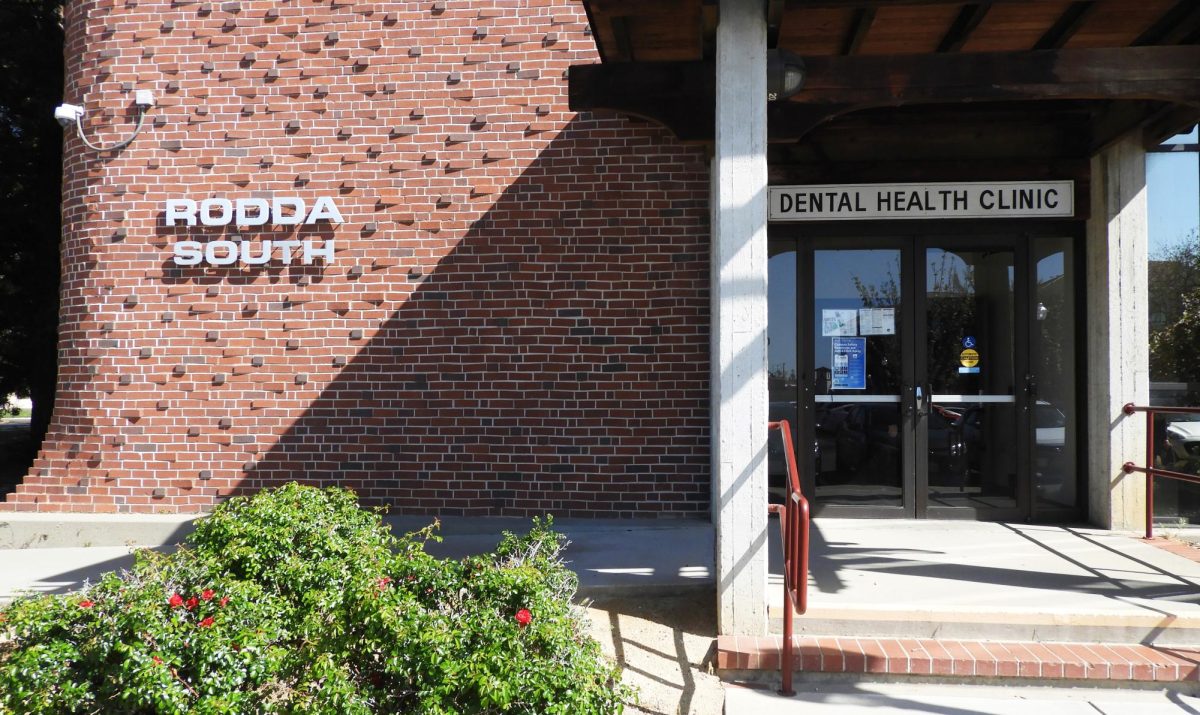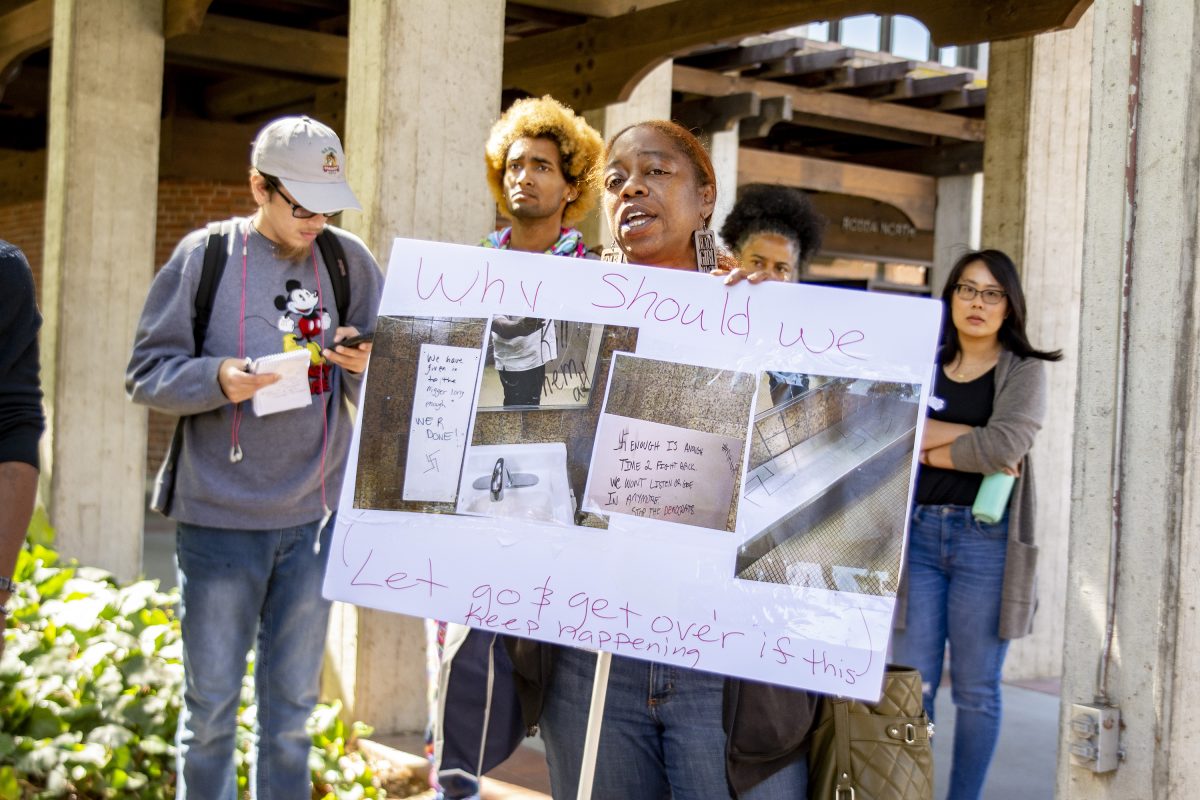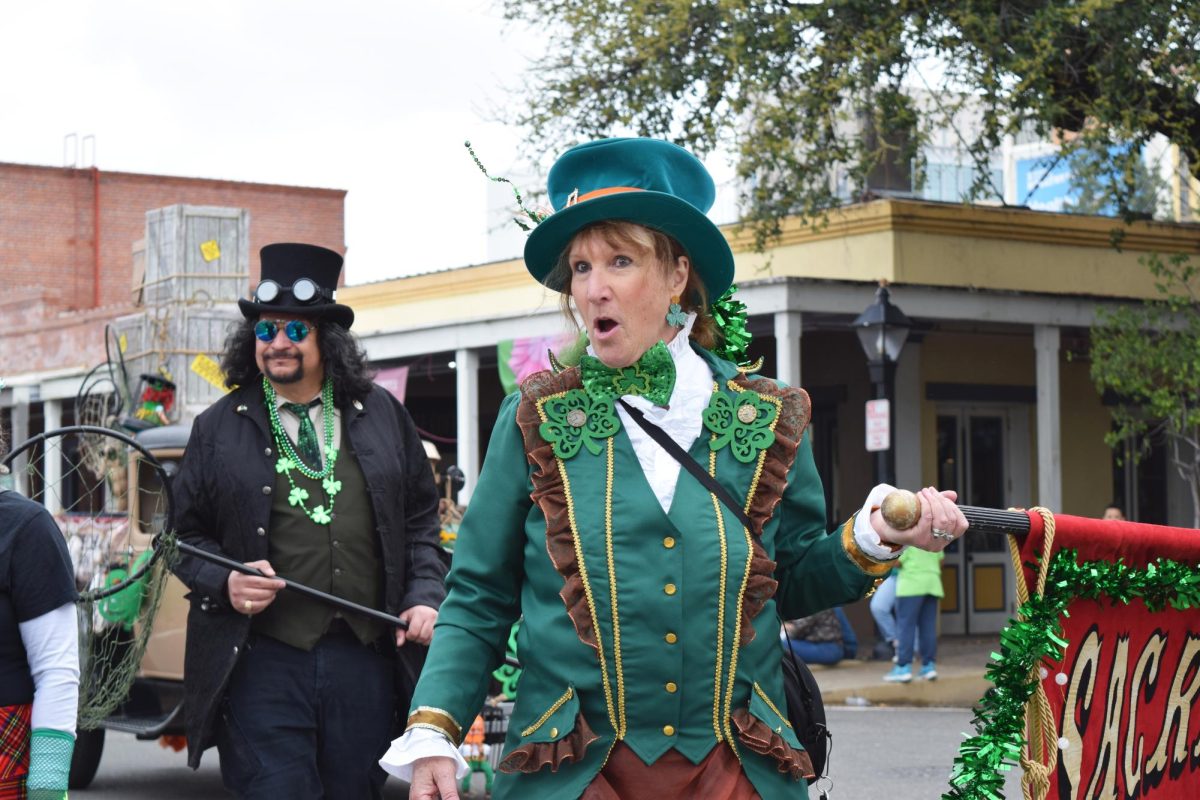Kandra Coleman holds a sign out front of Rodda Hall North Tuesday after protests on campus erupted over hate graffiti. Jason Pierce | Co-Editor-in-chief | jpierce.express@gmail.com
‘Hate has no home on our campus’; Students rise against racially charged graffiti
Hate speech graffiti was found Oct. 8 for the second time in a week at City College in the form of swastikas drawn on a board in the South Gym.
The incident follows the discovery of racist graffiti in a men’s restroom in Rodda Hall North Oct. 1, when photos of the hate speech were posted on social media.
The administration sent out an email Oct. 8 regarding the latest incident, spearheading efforts on “improving procedural flow to improve communication to students,” said City College Communications and Public Information Officer Kaitlyn MacGregor.
In the Oct. 8 email notifying students of the latest hate graffiti, City College President Michael Gutierrez reiterated the message conveyed the previous week, “Hate has no home on our campus.” He also encouraged students, faculty and staff to continue to report “any hateful, racist or threatening language or graphics found on our campus so we can act.”
City College students, faculty, staff and members of the Los Rios Police Department gathered on campus Oct. 3 for a student-led open mic forum after protests the day before over the hate graffiti found in the men’s restroom and what students called the school’s delayed response.
In his brief speech at the event on the steps in front of the South Gym, Gutierrez voiced his concern about how the administration handled the situation and his thoughts on moving forward.
“One thing that became very obvious yesterday is that we’ve not been listening enough,” Gutierrez said, emphasizing the last word. “And so, our role here, from yesterday, today and from now on out, is to listen better.”
Gutierrez, who became president of City College in 2017, said he realizes that some policies regarding announcements about safety to the campus community in place from years past have become outdated.
“For us to react in a way that was a solution that was good enough five years ago, or at least perceived to be good enough five years ago, it’s not good enough. It’s just not. And so we need to change,” he said.
Students protested and blocked off the men’s restroom in Rodda Hall North Oct. 2, complaining that the administration’s response to seeing photos of the racist graffiti on social media came much too late after their discovery. The concern over the administration’s lack of urgency and concern for safety led to the students planning the Oct. 3 public forum.
Gutierrez sent an email to the college community Oct. 2 shortly after the protests outside Rodda Hall North began, informing students that swastikas and hate speech targeting African-Americans were found on the walls and mirror of the first floor restroom in Rodda Hall North.
Photos of the graffiti were posted to social media late Oct. 1, and again the next morning expressing frustration with the schools response.
MacGregor said that she and the president learned about the racist graffiti early on Oct. 2.
“The president and I talked (Oct. 2) and put together this letter so that students, faculty and staff would be aware of what had happened,” said MacGregor.
The students at the protest said they were aware of the president’s email but added that they felt that the school and the county have no sense of urgency when it comes to protecting black people, according to Berry Accius, activist at Voice of the Youth.
“This is a moment where the city of Sacramento should look that this racism has been spread like a disease and it’s everywhere,” said Accius. “It’s not just in the local government, it’s not just in the police system, it’s not just in certain businesses and certain areas, it is infested in all of Sacramento County.”
Trayzell White, a business management major, said he thinks that in the eyes of the citizens of Sacramento, the school is not safe, and that has been shown today.
“We might not show it because that’s how we are as people, we’re not going to show our fear and how fearful we are, but in all actuality, I’m black and I’m so scared I could cry right now,” said White. “And that’s the problem, there is no sense of urgency when it comes to lives.”
Accius pointed out the need for a sense of urgency when lives are threatened.
“The wakeup I don’t think really happens until shit really hits the fan,” Accius said. “Let’s say those people who put those nice racist messages in the bathroom actually came and actually moved on those messages. What would’ve happened to Sacramento then? Could you imagine having those racist messages, no one talking about it because it was up Saturday, and then Monday being a clear out warzone of some racist person coming shooting up this school.”
MacGregor said that the protesting students made “good points… about communication because it took a little bit of a while for us to get our email out (Oct. 2).”
Kandra Coleman, City College student and president of the Umoja Success Scholars, shared her concern about the lack of timely communication from the school administration.
“I feel like, as being one of the outspoken black students, I have to step up, because this is unacceptable,” said Coleman. “If we wouldn’t have came out today, nothing would have happened. Absolutely nothing. Which is kind of scary when you’re trying to be an educated black person and you’re getting death threats that you don’t even know about.”
The protesting students said they were worried that other situations like this are happening on campus and not being addressed properly or communicated in a timely and urgent manner, according to Coleman.
“How many times has this happened at this school that we haven’t heard about?” Coleman said.
The day after the protests, Kimberly Ramos, president of the Student Senate at City College, voiced the importance of holding the student-organized response.
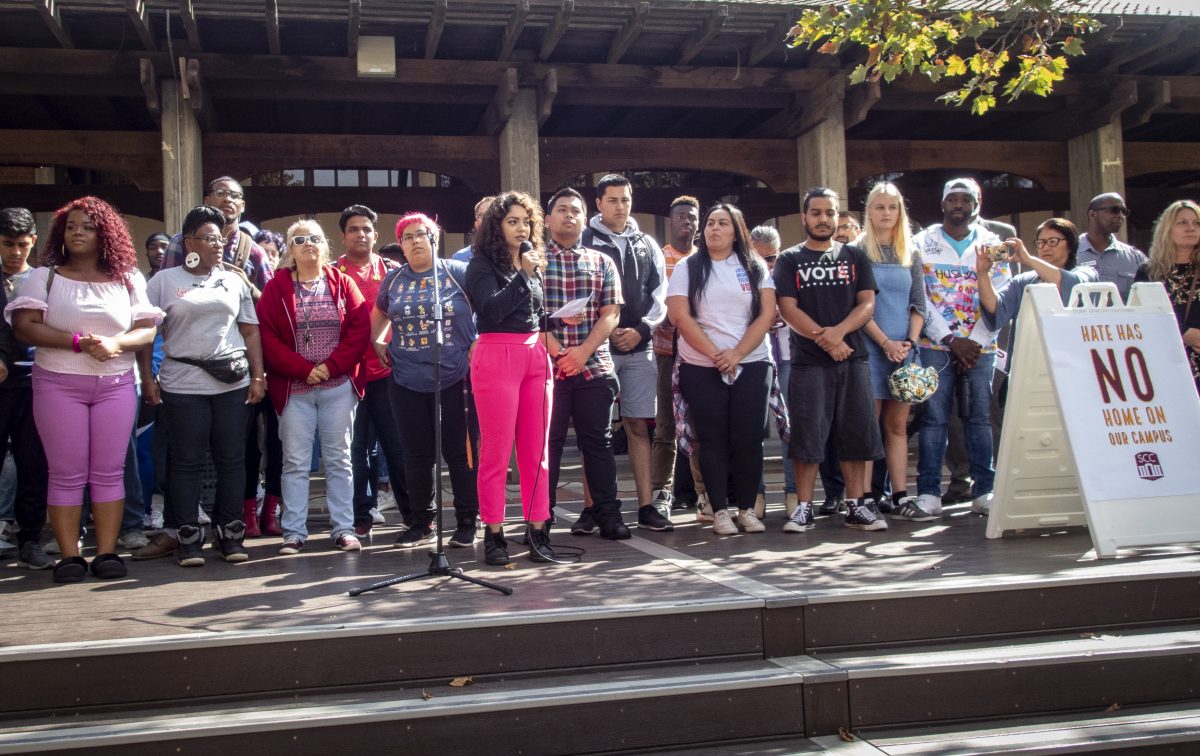
“I want to make sure every student knows about (the racist graffiti),” said Ramos. “It’s important that our students and families of these students know that this is going on at this campus so we can finally do something about it.”
City College Student Associated Council Adviser Kim Beyrer emphasized the importance of ongoing discussion about such issues.
“Communication is a big issue and if we’re not talking, we’re gonna have problems,” said Beyrer. “So I think everyone just needs to be talking more, reaching out, connecting. Like our students were saying, this isn’t just a black issue, it’s a people issue.”
Spreading timely awareness has been a concern voiced by all parties in the ongoing conversation. Coleman shared a similar concern.
“We didn’t find out until the next day when the pictures surfaced, or later on that night, what was actually said, and who was targeted,” said Coleman. “That’s a problem for me.”
Coleman advocated for peaceful discussion and safety on campus.
“We are educated black people. We’re not street thugs, we’re not gangs—we’re not criminals, we’re not—well, some of us might be, so we’ve reformed,” said Coleman. “We are all here for a reason. I am not invoking any type of violence, because this is not how we need to meet this situation. We are at a higher learning institute. Use your mind. Make them put things in place for you. Make them make sure when you get here, you’re as safe as everybody else.”
Regarding solutions and what comes next, Gutierrez outlined the college’s plan for action.
“We need to change,” said Gutierrez. “Meeting with students, faculty and staff, we are going to create a task force to really look at what our priority is for our college, which is to increase student success of our African-American students. But rather than just having that as words, make it a priority and have action behind it.”
Gutierrez said the college would employ a strategy used at a few other colleges and universities, calling for “a single point of contact, so whenever there is hate speech, or something that is insensitive at our college, that a student knows where to report it.”
Details of that concept have yet to be developed by the task force Gutierrez plans to assemble.
Ramos spoke of change through action, too.
“I have already reached out to some BSU (Black Student Union) and Umoja representatives to come sit on the board, come join us in the meetings, be a part of student representation, student senate,” said Ramos. “We need to start implementing safety workshops so that students know that when there is crime happening, that we know who to go to, the first step to take, and how to feel safe on campus.”
Coleman spoke of unity and continued support from everyone, regardless of ethnicity.
“There’s a couple people that are not—black students, who are standing with us, and I want to let y’all know that I do appreciate it, but at the end of the day, tomorrow we need y’all to be here. And we need y’all to be here the next day after that, and the next day after that until they do something,” said Coleman. “For the black students that are out here, we need y’all—come together. Meet a new black friend today. Before you leave this setting, meet somebody. Talk to somebody.”
Ramos expressed her emotion and urgency for action.
“I’m feelin’ it. I’m feelin’ the love, and I’m feelin’ the hate, and we need to do something about it. We need to make sure that all students feel safe on campus,” said Ramos.
Chief of the Los Rios Police Department Larry Savidge, who is new to the district, spoke briefly, assuring the audience of the Oct. 3 forum of his commitment to everyone’s safety on all campuses in the district.
“I have a deep appreciation for everybody of different religions, nationalities, ethnicities, sexual preferences, what have you,” he said, pausing and seeming to search for a word.
The crowd gave it to him: “orientation!”
“Orientation—thank you for helping me on that,” Savidge continued. “And so, you’re not going to find a bigger advocate of trying to protect you than me. And that’s my passion. When we see something that’s not right, we need to fix it.”
Gutierrez left the crowd with a message that he is ready to meet with students, faculty and staff who have concerns.
“I’m here to listen, my door is open, I want to hear from you, and we will do better,” he said.
After the forum, Gutierrez reiterated in an email statement, “It is clear that the handling of this incident was unacceptable. We must do better.”
In an Oct. 4 email sent to the college community, Gutierrez announced a series of working forums for students, staff and faculty to participate in, the first set for Oct. 19 from 11:30 a.m.-1 p.m. in South Gym 120. “Hate Has No Home On Our Campus,” a writing project located at the gazebo on campus, was also announced in the email.
At the student-organized response, Coleman spoke decisively to the audience about holding the college to higher standards.
“Instead of being reactive when something happens to the black students, I need y’all to start being proactive,” said Coleman.


